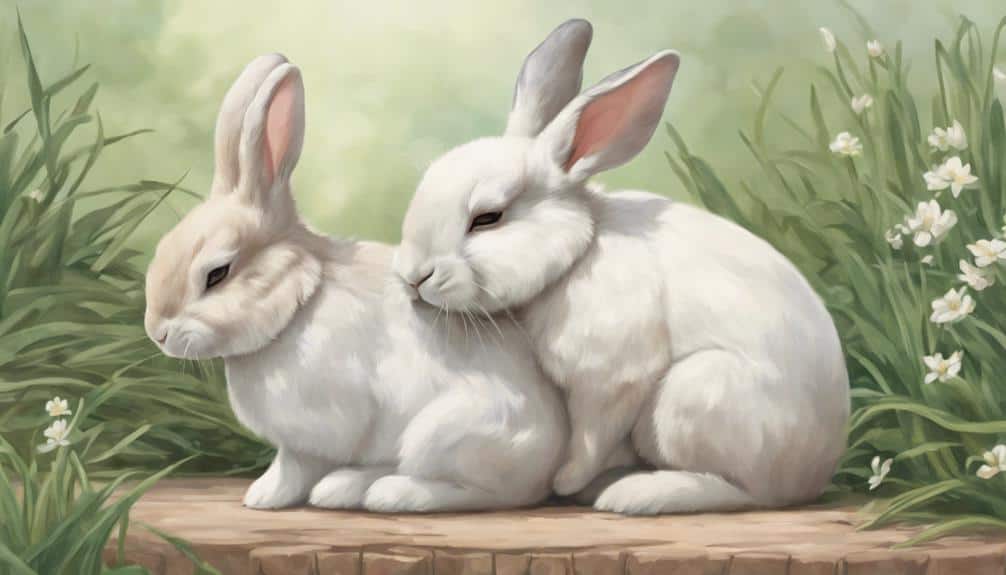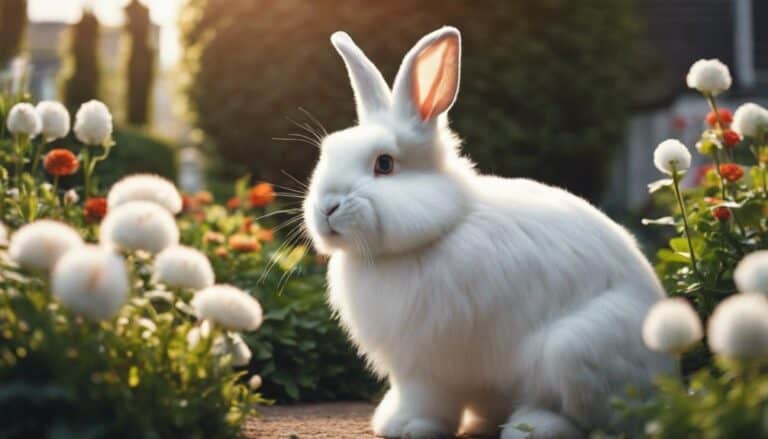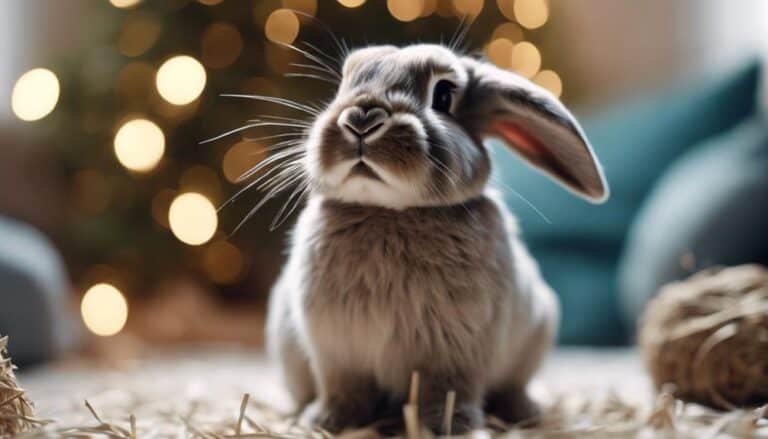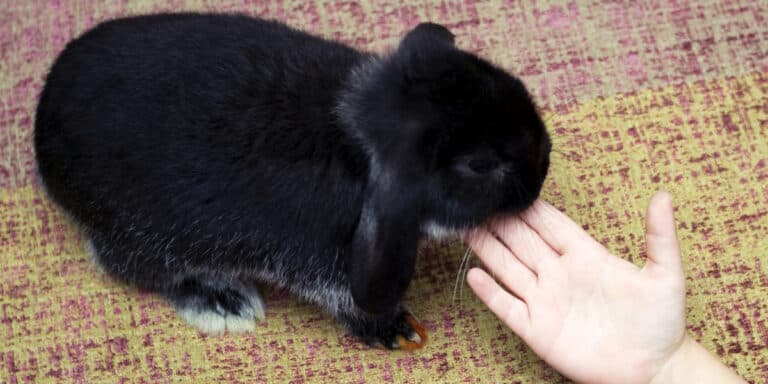Imagine a world where words are unnecessary, and emotions are conveyed through gentle gestures. Bunnies have mastered this art through their grooming rituals, a silent language that speaks volumes in their intricate social dynamics.
From subtle nuances to profound meanings, the act of grooming among bunnies holds a key to understanding their intricate communication network. The significance of grooming goes beyond mere hygiene; it is a window into the complex world of rabbit social behavior, where every stroke and nuzzle tells a story waiting to be unraveled.
Contents
- 1 Key Takeaways
- 2 Grooming as Social Bonding
- 3 Mutual Grooming Behavior
- 4 Grooming for Scent Marking
- 5 Grooming in Hierarchy Establishment
- 6 Grooming for Stress Relief
- 7 Grooming for Communication
- 8 Frequently Asked Questions
- 9 How Does Grooming Play a Role in a Bunny’s Expression of Affection?
- 10 Conclusion
Key Takeaways
- Grooming fosters unity and hierarchy among rabbits.
- Mutual grooming signifies trust and affection in rabbit groups.
- Scent marking through grooming establishes ownership and familiarity.
- Grooming behaviors enhance social bonds and communication in rabbit communities.
Grooming as Social Bonding

Grooming among rabbits serves as an important social bonding activity within their groups, strengthening relationships and establishing hierarchy. This grooming behavior isn't just about cleanliness; it's a way for rabbits to show affection and care for one another.
When a rabbit grooms another, it signifies a level of trust and closeness between them. By focusing on areas like the forehead and ears, rabbits communicate their social status within the group. Dominant rabbits often receive more grooming from subordinates, highlighting their position in the hierarchy.
Through grooming, rabbits establish and reinforce social bonds, creating a sense of unity and cooperation within their community. This act of grooming goes beyond physical cleanliness; it's a language of love, trust, and respect among these social creatures.
Mutual Grooming Behavior
In observing rabbits engaging in mutual grooming behavior, one can witness a display of affection and care that reinforces their social bonds and hierarchy within the group. Rabbits engage in this behavior to communicate various messages among themselves:
- Affectionate Gestures: Mutual grooming serves as a way for rabbits to show their affection for one another.
- Hierarchy Reinforcement: Dominant rabbits often receive more grooming from subordinate rabbits, signifying respect and reinforcing the social hierarchy within the group.
- Bond Strengthening: Through grooming each other's foreheads and ears, rabbits strengthen their bonds and friendships, especially in closely bonded pairs.
- Sign of Closeness: Mutual grooming signifies closeness and trust among rabbits, creating a sense of security within the group.
- Social Order Maintenance: Grooming behaviors play a pivotal role in establishing and maintaining the social hierarchy among rabbits, ensuring order and harmony within the group.
Grooming for Scent Marking

Rabbits groom to mark their territory and communicate with others through scent.
Chin grooming, where rabbits rub their chin on objects, is a common way they leave their mark.
This behavior helps establish ownership and familiarity in their environment.
Scent Marking Behavior
Scent marking behavior in bunnies involves strategically spreading their scent to assert dominance and establish ownership within their environment. When observing this behavior, you may notice the following:
- Bunnies use their scent glands to leave a unique mark that signifies their presence.
- They mark their territory by chin rubbing on objects or even on you to claim what they consider theirs.
- Through grooming for scent marking, rabbits communicate their boundaries clearly to others.
- This behavior is a way for rabbits to assert their dominance and maintain order within their community.
- By engaging in scent marking through grooming, bunnies create a familiar environment that helps them feel secure in their territory.
Grooming to Communicate
Bunnies engage in intricate grooming rituals, utilizing this behavior as a means of vital communication through the transfer of scents. Through grooming for scent marking, rabbits establish a shared odor within their group, promoting social cohesion and bonding. This scent marking helps them recognize and identify members of their social circle, strengthening their relationships.
Dominant rabbits often receive more grooming from others, reinforcing their hierarchical status within the group. By engaging in grooming behaviors, rabbits not only maintain hygiene but also play a pivotal role in communication and building connections with their fellow companions.
The act of grooming goes beyond cleanliness; it serves as a powerful tool for expressing affiliative behaviors and maintaining social harmony among bunnies.
Social Bonding Through Grooming
Engaging in grooming rituals for scent marking plays an important role in fostering social bonds among these furry companions.
- Scent glands: Rabbits use scent glands to leave their mark while grooming, creating a communal scent profile.
- Social bonding: Through mutual grooming, rabbits reinforce their social bonds, promoting unity within the group.
- Scent marking: Grooming behaviors help rabbits mark their territory and establish ownership within their social circle.
- Mutual grooming: This shared activity not only spreads scent but also enhances trust and cooperation among rabbits.
- Rabbit communication: Grooming for scent marking serves as a form of non-verbal communication, aiding in the recognition of group members and reducing conflicts.
Grooming in Hierarchy Establishment
Rabbits groom each other as a way to establish hierarchy within their group. The act of grooming can signify dominance or submission among rabbits, with dominant individuals often receiving more grooming from subordinates.
Through grooming behaviors, rabbits reinforce social order and strengthen their bonds within the group.
Grooming for Dominance
Within rabbit social structures, grooming serves as an important indicator of hierarchy, with dominant individuals typically receiving more grooming interactions as a display of submission and respect from their subordinate counterparts.
- Dominant rabbits receive more grooming as a sign of respect and submission from subordinate rabbits.
- Grooming signifies hierarchy in rabbit relationships, with dominant rabbits often initiating grooming sessions.
- Grooming can indicate close friendship and bonding between rabbits, strengthening their social connections.
- The frequency and intensity of grooming interactions can reflect the established dominance within a rabbit group.
- In rabbit pairs, grooming behaviors can help establish and maintain the hierarchy, with dominant rabbits often being groomed more frequently.
Grooming for Bonding
Grooming behavior in rabbit pairs not only establishes hierarchy but also plays an important role in fostering bonding and strengthening social connections between individuals. Rabbits use grooming as a way to show care, affection, and build trust with their companions.
Through grooming, rabbits communicate their willingness to form a close bond, showcasing their social connections and reinforcing relationships. In bonded pairs, dominant rabbits often receive more grooming from subordinate rabbits, indicating respect and submission.
This grooming process is essential for creating a sense of security and companionship within the group. By engaging in grooming behaviors, rabbits not only establish their place in the hierarchy but also cultivate trust and strengthen the bonds that tie them together.
Grooming for Stress Relief
Indulging in a grooming session, whether it's self-maintenance or mutual care, serves as an important stress-relief mechanism for bunnies. When rabbits engage in grooming activities, they aren't just focusing on cleanliness; they're also finding comfort and relaxation in the process. Here are some key observations regarding grooming for stress relief:
- Grooming is a natural stress-relief behavior for rabbits, helping them calm down in times of anxiety.
- Rabbits groom themselves and each other to alleviate tension and foster emotional well-being.
- Mutual grooming acts as a form of social support among rabbits, promoting a sense of security and connection.
- Grooming can be a sign of trust and affection, especially within bonded rabbit pairs.
- Regular grooming sessions contribute to a relaxed and contented rabbit, enhancing their overall quality of life.
Grooming for Communication

Observing rabbits engaging in grooming behaviors reveals a fascinating form of communication that showcases their affection and social bonds. Grooming isn't merely about cleanliness; it's a way for rabbits to express their care and strengthen their relationships.
When rabbits groom each other's foreheads and ears, they aren't just removing dirt; they're actively bonding with one another. Dominant rabbits often receive more grooming, indicating a key role within their social structure.
This grooming behavior is essential for establishing and maintaining social bonds among rabbits. For bonded pairs, grooming is a sign of close friendship and trust. Through grooming, rabbits emphasize their social nature and communicate their affection towards one another.
Frequently Asked Questions
How Does a Rabbit Communicate?
You observe rabbits communicating through various channels: vocalizations, body language, scent marking, grooming, bonding rituals, and aggression signals. They establish dominance hierarchies, show submission, and convey emotions through intricate behavioral cues.
What Is the Grooming Behavior of a Rabbit?
In the grooming behavior of rabbits, they establish social bonding through mutual grooming, scent marking, and dominance displays. This ritual is essential for maintaining hierarchy, reducing stress, and displaying affection, highlighting their intricate social dynamics.
What Does It Mean When a Rabbit Grooms Near You?
When a rabbit grooms near you, it signifies bonding behavior, affectionate gestures, and trust building. This social interaction shows acceptance in their group. It's a way for rabbits to mark territory, seek attention, and strengthen their connection with preferred companions.
What Does It Mean When a Rabbit Cleans Itself in Front of You?
When a rabbit cleans itself in front of you, it's a bonding gesture, showing comfort and trust. It seeks attention, builds trust, and signifies social interaction. Witnessing this behavior indicates a positive connection and affection towards you.
How Does Grooming Play a Role in a Bunny’s Expression of Affection?
Grooming is one of the ways bunnies show affection towards each other. By nibbling and licking their fellow bunnies, they establish close bonds and strengthen their social relationships. This act of grooming also helps them strengthen the emotional connection within their group, making it an integral part of bunny communication and expressing affection.
Conclusion
As you observe the intricate grooming rituals of bunnies, it becomes clear that beneath the surface of affectionate gestures lies a complex web of social hierarchy and communication.
The seemingly innocent act of grooming serves as a tool for dominance, scent marking, and stress relief among rabbit communities.
So next time you witness bunnies grooming each other, remember that there's more than meets the eye in their seemingly adorable interactions.






